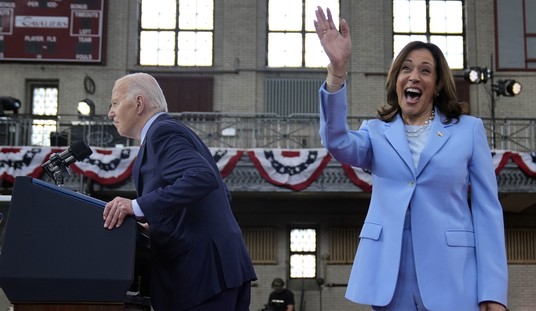In the first months of 2012 I was asked if I would consider a private commission from a company to write a report on the question of whether the nations surrounding China could resist Beijing’s pressure to advance its ambitions in the South China Sea, and a short preview of what my conclusion might be. My short reply is below and there the matter ended:
I think the short answer to the question you pose is “Yes, The Outer Asian shore—Korea, Japan, Taiwan, Philippines, Singapore—will be secure and more than capable of resisting Chinese attempts to pressure them one-by-one”. The reason for this, is in a nutshell — Japan, and to a similar extent, the United States. It’s is in Japan’s existential interest to keep China from being overly dominant, and it can and will play a role similar to that played by Britain during the Napoleonic wars; keeping the balance of power. The alternative is to submit to long-term Chinese dominance; and it will not do so without a fight.
All the countries mentioned above trade big with China, but also trade big, if not bigger, with Japan. Unless Japan completely collapses, no country in the region can contemplate losing Japan simply to please China. After the last Taiwan Straits crisis, Japan began a process of rearmament in order to bolster the Taiwan guarantee in the event Washington turned chicken. That was a message to China which is also a message to anyone who thinks about the problem. More recently, one of the Australian think tanks urged the US to beef up its Pacific presence because it feared that if Washington dropped the ball, Japan, not the US would rise up to be the predominant guarantor of Pacific security. Australia still hasn’t forgotten the war and doesn’t want that.
Another major factor arguing against Chinese hegemony is that all the countries in the region rely heavily on trade. Some like HK and Singapore, are entrepots. A power struggle for the region would be ruinous since any naval tension would essentially blockade them all. So China is unlikely to try force. What about creeping Finlandizations? Well any Chinese efforts to subvert each offshore country by non-military means would be met by Japan in the same vein, unless I am very mistaken.
What are the variables which can alter the calculation? The long term economic and demographic trends of Japan and China come to mind, because they can permanently alter the correlation of forces. Japan has an aging population. But the Chinese one-child demographic cliff has still to fully kick in. In the near term the balance is unlikely to tip drastically one way or the other. The biggest Joker in the deck is Washington. Washington can, by inattention, invite an adventure and set in train a series of unwanted responses from Japan. I think the latest defense posture, with its pivot to the Pacific is at least an acknowledgement that this danger exists.
That is the basic outline of my thinking just offhand.
Now it looks as though that analysis will be directly tested. A few days ago the Telegraph reported that “China warned its citizens in the Philippines to “stay indoors” on Thursday as its state media warned of war over a month-long dispute in the South China Sea.”
The proximate cause of the Chinese reaction were demonstrations in front of the Chinese embassy protesting incursions into disputed waters. They were participated in by — ironies of ironies — Philippine left wing parties.
President Aquino’s spokesmen were at pains to explain that such demonstrations were a normal feature of political life. “It was a decision taken by private citizens who feel out of patriotism that they have to speak on the issue”. Manila also responded to reports that the Chinese have more punishment waiting to meted out in the wings by saying it would refuse to be baited into rash action.
Presidential spokesman Edwin Lacierda said Manila would instead continue to engage in diplomacy in the face of apparent Chinese economic sanctions.
Lacierda said there was no reason for China to suspend tour packages to the Philippines and to impose stricter rules on bananas or other exports coming from Manila.
Not that Manila can do anything on its own. Here is a video of the Philippines deploying the Rajah Humabon to disputed shoals. The Humabon was launched in 1942 as the DE Atherton and actually sank a U-boat in the course of her World War 2 career. Then she was transferred to the reconstituted Japanese Navy in the 50’s, and after being relinquished by Nippon as scrap, was recommissioned in the Philippine Navy. She may be the only warship afloat today which served in the navies of three Pacific War belligerents and may yet fight again.
But she will not fight long in the event. If the sight of her training a 3 inch gun over open sights is not enough to kill the Chinese sailors outright from laughter, the subsequent explosion of the ancient gun will probably mow down the Filipino gun-crew. Clearly a non-diplomatic response can come only from the United States or Japan.
Foreign Policy had a long article early this month titled “Japan Awakens”. It maintains that by slow degrees the Japanese Navy has moved from a purely defensive creature to a modern naval force capable of independent operations.
Japan’s position began to change starting a decade ago. After being derided for refusing to contribute troops during the 1991 Gulf War to help secure the oil supplies on which it was dependent, and being ridiculed for instead writing a multi-billion dollar check to pay for American military operations, Tokyo reacted with alacrity to the 2001 al Qaeda attacks on the United States. Then-Prime Minister Junichiro Koizumi of the long-ruling Liberal Democratic Party forged a close relationship with President George W. Bush, dispatching support and reconstruction troops to Iraq and Afghanistan and beginning what would turn out to be an eight-year maritime allied refueling mission in the Indian Ocean in support of anti-terror operations. More recently, Japan also sent ships and planes to the Horn of Africa to conduct anti-piracy operations; this deployment has resulted in Japan building its first overseas base since World War II, in Djibouti. The combined effect of these overseas missions has been to develop a generation of SDF air, sea, and land officers with extensive operational experience and the confidence of dealing with foreign partner militaries …
Another potentially significant change Noda has instituted is to begin revising Japan’s decades-old prohibition on arms exports. The so-called Three Principles have prevented Japanese defense contractors from jointly developing arms or exporting it to any country other than the United States for joint defense purposes, a ban originally instituted in 1967 against communist countries.
The basic thesis of the FP article is that Japan is filling the gap left by the Pax Americana fraying at the edges. It would not be surprising if the Obama administration, rather than restoring the edges, decided to again “lead from behind” and exhort the Japanese to provide the distant cover for the Philippines, if it were inclined to support the Philippines in this claim at all. The problem with that approach is that peace in the Pacific Rim has been largely due to the United States standing between the ancient enmities of China and Japan. To lead from behind in this case is like hiding behind fuel to avoid coming into contact with oxider, possibly not a good idea. The FP article continues:
Like many countries, Japan is afraid of running afoul of China, its largest trading partner, yet China’s military poses the only real security threat to Japan for the foreseeable future. How can Japan square the circle of justifying a military buildup to blunt China’s advantages while continuing to develop economic ties? A new vision is desperately needed as Japan’s military begins to transition away from decades of purely defensive thinking toward the new rubric of “dynamic deterrence” and purportedly closer cooperation with its sole ally, the United States …
The transformation of Japan’s security posture is slowly changing how the country interacts with the rest of the world. It is more capable, more experienced, and more willing to consider altering decades-old practices. It awaits a clear political vision followed by a mandate to take advantage of the changes it has already made, and to evolve both its partnerships as well as its willingness to shoulder more burdens on the global stage. Given how much it is already changing, Japan’s leaders may find it easier than they think to take the final steps.
This is more or less a reaffirmation of the situation as I saw it. The only question is if it will play out in a rational way. China should not push in the South China Sea, but for reasons of domestic policy, they might. The Epoch Times argues that China’s sudden aggressiveness is the expression of an internal power struggle in Bejing. “A spat between the People’s Republic of China and the Philippines regarding Huangyan Island, or Scarborough Shoal, in the South China Sea has forced the issue of who now controls the armed forces in China to the fore. While ships from both countries have faced off near the island for three weeks, senior naval officials from China have been pledging allegiance to the Chinese Communist Party central’s command.”
Social commentator Wen Zhao told Sound of Hope Radio, that the South China Sea incident is being stirred up to redirect pressure from top security chief, Zhou Yongkang, and his allies—who came under fire last month after Bo Xilai was sacked …
However, since April 10 and Bo Xilai’s public sacking, various large military districts in China and key military figures have expressed allegiance to Hu Jintao, rather than Zhou Yongkang.
Navy rear admiral, 171 fleet commander, and deputy chief of staff of the South China Sea Fleet, Li Shaohong said: “Our navy, what kind of actions our forces will take, I have already stressed before, we will follow orders from the Party Central Committee and Central Military Commission,” according to Shanghai’s Dragon TV report.
In other words, this may be the Chinese version of “wag the dog”. Probably no one intends it to go as far as “eat the dog” but confrontations can escalate out of control — and the outcome of China’s confrontation with the Philippines over the South China Sea will be either to succeed in overawing the weak Philippine state or to draw in great powers who fear Chinese expansionism. Either way it runs risks. If China’s pressures are beaten back it may only be at the price of accepting Japan’s return in power to the Pacific ocean. The world has 70 years of peace. It is too bad that there so few in the West who understand what a bargain that has been.
How to Publish on Amazon’s Kindle for $2.99
The Three Conjectures at Amazon Kindle for $1.99
Storming the Castle at Amazon Kindle for $3.99









Join the conversation as a VIP Member